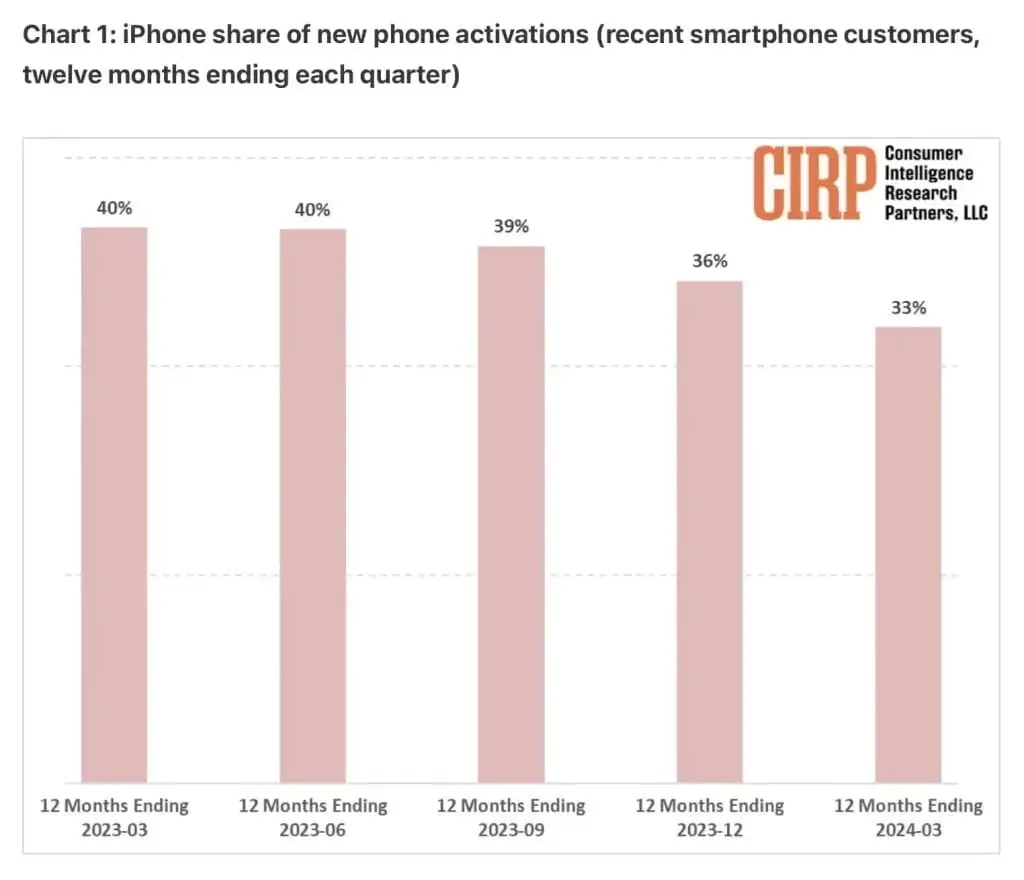The ongoing competition between iOS and Android continues as Apple introduces new iPhone models each year, while companies like Samsung, Xiaomi, and Oppo aggressively pursue increased market presence. Despite this long-standing battle, recent trends suggest a shift in the landscape. A recent report indicates a decline in iPhone activation rates, with Android now dominating the market share. Let’s delve into the specifics…
iPhone Activation Rates Decline in the US as Android Sees Surge
A recent report by CIRP highlights a notable decrease in iPhone activations in the U.S. when compared to Android devices. Activation, the process of registering a new phone with Apple, serves as a crucial metric for market share analysis. The latest data reveals that Apple’s share of new smartphone activations in the U.S. has dropped to levels not witnessed in the past six years.
The report illustrates a sharp decline in the rate of new iPhone activations in the United States over the past year. Previously standing at 40% during the first two quarters of 2023, this rate plummeted to 33% in the initial quarter of 2024. This downward trend indicates a rising market share for Android devices, now constituting two out of every three new activations. This downturn marks Apple’s lowest rate since 2017. CIRP speculates on several potential factors contributing to this shift.
Factors Behind the Decline in iPhone Activations
One significant factor could be the perceived lack of innovative features in recent iPhone iterations, failing to offer sufficient motivation for consumers to upgrade. Additionally, existing iPhone models continue to perform well; even owners of an iPhone 11 find their devices adequately functional. The consistent design aesthetics of iPhones have also deterred users from switching to newer models.
Conclusion
The dynamics of smartphone activations in the U.S. are witnessing a notable transformation as Android claims a larger share of the market, while iPhone activations experience a decline. This shift underscores the importance of innovation and consumer incentives in the fiercely competitive realm of mobile devices.


Leave a Reply